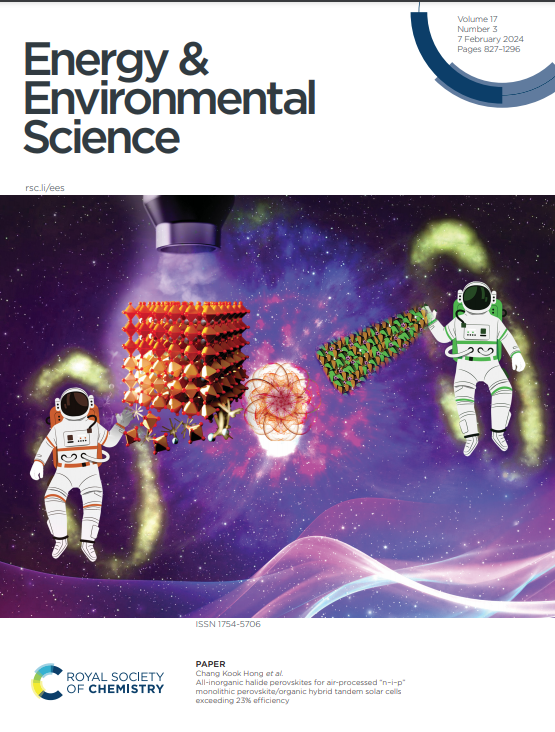Suppression of Interfacial Water Layer with Solid Contact by an Ultrathin Water Repellent and Zn2+ Selective Layer for Ah-Level Zinc Metal Battery
IF 32.4
1区 材料科学
Q1 CHEMISTRY, MULTIDISCIPLINARY
引用次数: 0
Abstract
The failure of zinc metal batteries usually involves the instability of the protection layer of zinc metal anode due to the water penetrating and dissolution during long-term operation, leading to the uncontrollably erratic electrode/electrolyte interface and hydrogen evolution reaction. Here, we propose an ultrathin, water-repellent, Zn2+-selective layer to prevent the undesirable water layer and avoid the water penetrating and dissolution. This interface, with an ultrathin thickness of 16.9 nm, is composed of a water repellent didodecyldimethylammonium organic top layer and an open three-dimensional framework structure of inorganic layer with subnanometer pores and redox-active Fe centers that function as faradaic ion pumps, facilitating rapid Zn2+ transport. This ultrathin solid contact layer acts as semi-permeable membrane with low water permeance of 0.000028 mol m-2 h-1 Pa-1, while facilitating fast Zn2+ transport, thus suppressing hydrogen evolution. As a result, this layer enables over 10,000 stable plating/stripping cycles at 5 mA cm-2 with an average Coulombic efficiency of 99.91%. At a high rate of 150 C, the Zn-I2 cell operates for an unprecedented 65,000 cycles. Moreover, Ah-level Zn-I2 pouch cells were verified, demonstrating scalable applicability towards grid-scale energy storage device. Our work demonstrates the importance of designing stable and functional interface layer for metal anode towards high-energy metal battery.求助全文
约1分钟内获得全文
求助全文
来源期刊

Energy & Environmental Science
化学-工程:化工
CiteScore
50.50
自引率
2.20%
发文量
349
审稿时长
2.2 months
期刊介绍:
Energy & Environmental Science, a peer-reviewed scientific journal, publishes original research and review articles covering interdisciplinary topics in the (bio)chemical and (bio)physical sciences, as well as chemical engineering disciplines. Published monthly by the Royal Society of Chemistry (RSC), a not-for-profit publisher, Energy & Environmental Science is recognized as a leading journal. It boasts an impressive impact factor of 8.500 as of 2009, ranking 8th among 140 journals in the category "Chemistry, Multidisciplinary," second among 71 journals in "Energy & Fuels," second among 128 journals in "Engineering, Chemical," and first among 181 scientific journals in "Environmental Sciences."
Energy & Environmental Science publishes various types of articles, including Research Papers (original scientific work), Review Articles, Perspectives, and Minireviews (feature review-type articles of broad interest), Communications (original scientific work of an urgent nature), Opinions (personal, often speculative viewpoints or hypotheses on current topics), and Analysis Articles (in-depth examination of energy-related issues).
 求助内容:
求助内容: 应助结果提醒方式:
应助结果提醒方式:


